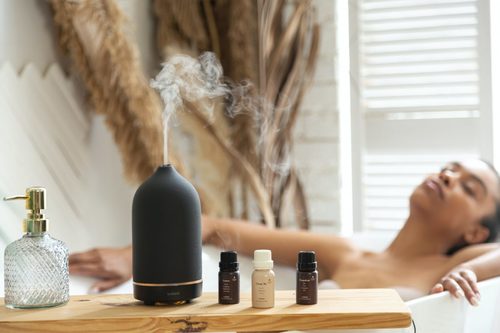Spring has arrived and while most of us are ready to welcome the warmer days, it also brings with it a surge of seasonal allergies.
With relatively short, moderate winters and longer balmy months, as well as an abundance of grass, pollen counts tend to be high across South Africa, triggering allergic reactions.
What’s the problem with pollen?
There’s no way to avoid breathing in airborne pollen from flowering trees and other plants, as well as tiny, pollen-like grass seeds.
Sometimes our immune systems react to harmless pollen as an invader causing allergy signs and symptoms. High pollen counts can also trigger attacks in people suffering from asthma.

Image credit: Pexels
Allergic rhinitis, which is commonly known as hay fever, results in cold-like symptoms including sinus congestion and pressure, post-nasal drip, runny nose, sneezing and coughing. Unlike a cold which is induced by a virus and lasts about 7 to 10 days, allergic rhinitis can persist for as long as you are exposed to allergens.
The World Health Organisation estimates that 10 to 30% of the global adult population and up to 40% of children are affected by allergic rhinitis.
Reactions to increased pollen in the environment also include allergic conjunctivitis which results in itchy, red or watery eyes and skin conditions such as ‘hay fever rash’ and allergic dermatitis.
While pollen and grass seeds are common triggers in spring and summer, allergic reactions can also be caused by dust mite droppings, pet dander and spores from mould or fungi, which can be present in our environment at any time.
It’s time for a fresh approach
If you’re a long-term sufferer of seasonal allergies, you may already take measures such as monitoring high pollen count days, making sure your house is clean to get rid of pollen that may be blowing in through open windows and doors and showering and changing clothes as soon as you come in from the outdoors.
However, these prevention tactics may not be enough, and it helps to have a plan to treat allergy symptoms, especially to avoid the development of more serious conditions such as bronchitis, pneumonia and ear infections.
Conventional treatments include antihistamines, decongestants, and corticosteroids. These medications come with side effects including drowsiness and long-term usage concerns. It is important to consult your health professional and get their advice before using over-the-counter or prescription meds.
ALSO SEE:
The Benefits Of Essential Oils For Allergies
Not everyone finds relief from conventional treatments, and because allergy season in South Africa is so long, many prefer side-effect-free solutions such as aromatherapy.
Aromatherapy as a solution to allergies
Qualified pharmacist, aromatherapist and the founder of Aromatic Apothecary, Doryce Sher says, “When it comes to managing the symptoms of seasonal allergies, aromatherapy offers a natural path for the whole family because they can be used by children.”

Image credit: Unsplash
Which aromas should I use to alleviate allergy symptoms?
For centuries, the aromatic compounds from plants have been used to alleviate the symptoms of upper respiratory conditions.
Try:
- Eucalyptus
- Tea tree
- Peppermint
Apart from how effective they are at bringing relief, aromatherapy solutions have the advantage of being non-drowsy and help to avoid the long-term overuse of products such as nasal decongestants.
Aromatherapy products can easily be used in conjunction with conventional medications. Adding Aromatic Apothecary’s inhaler, Colds & Sinus Sinusniff and the mini roll-on, Colds & Sinus Soother to your allergy kit gives you options that are quick to use and provides daily relief without any side effects or concerns about over-use.
We can’t avoid seasonal allergies, but we can find natural and holistic ways to manage the symptoms so that we keep our work and physical activity on track and enjoy all the pleasures of this warmer time of year.”
ALSO SEE:
Featured image: Unsplash

